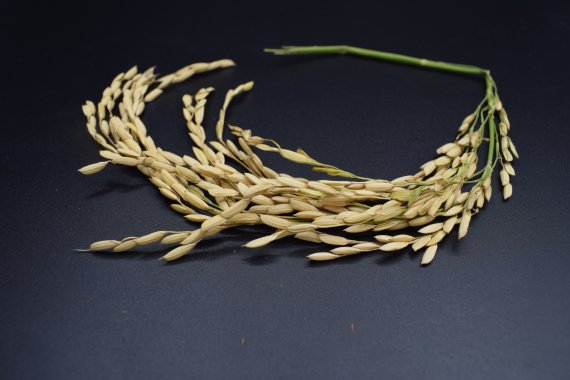Researchers from WUR and natural history museum Naturalis have found 15 hitherto undocumented traditional rice varieties in Surinam. They form both a food source and part of the cultural heritage of the Marrons, descendants of Africans brought to Surinam by slave traders.
The study was led by Tinde van Andel, professor of Ethnobiology at WUR and a researcher at Naturalis. Her team collected rice varieties among the Ndyuka Marrons, who settled on the banks of rivers including the Marowijne on the border of Surinam and French Guyana after escaping or being freed from slavery. The researchers found 50 varieties of both Asian and African rice in the Marron villages on the river, 15 of which were hitherto undocumented, they reported last week in Frontiers in Plant Science.
These traditional rice varieties are a key source of genetic diversity, says Van Andel, but 300 years ago they made a crucial contribution to the survival of slaves who fled into the Surinamese jungle. The names of two traditional varieties, Milly and Sapali, are those of women who plaited rice grains into their hair to take with them when they escaped from slavery, says Van Andel.
Her research team could determine the genetic origins of the 15 rice varieties using modern DNA sequencing techniques. These revealed that the Marrons have exchanged rice seed over the past centuries, in spite of the fact that their villages are far apart and inaccessible. Even though the Marrons gained access to improved American rice varieties after World War II, they still grow the traditional varieties. They eat these for their flavour and nutritional value, but they also play a key role in the spiritual lives of the Marrons. Through their rituals, Van Andel concluded, the Marrons maintain the genetic diversity of rice.
Van Andel did this research with colleagues from Naturalis, her Wageningen colleague Harro Maat and a researcher from the Anne van Dijk Research Centre in Surinam. This research centre was named after rice pioneer Anne van Dijk (1911-1990), from the period when Surinam was still a Dutch colony. Van Andel proved earlier that the black rice grown by the Marrons in Surinam originally came from Ivory Coast.

 The traditional rice varyity Milly, Photo: Alice Bertin
The traditional rice varyity Milly, Photo: Alice Bertin